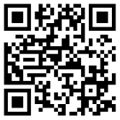我们导读:2010年1月27日,欧盟修订番茄红素作为食用色素的暴露评估结果。
原文报道:
Following a request from the Commission, a revised exposure assessment of lycopene from use as a food colour and from natural occurrence, for children and adults, was carried out using the proposed revised maximum and typical use levels according to a range of scenarios defined in the terms of reference, and with reference to the exposure assessment presented in the former opinion by the EFSA’s Panel on Additives, Flavourings, Processing Aids and Materials in Contact with Food (AFC). EFSA noted that most of the use levels were reduced considerably compared to those considered in former EFSA evaluations.
Several food consumption databases were used to conduct the current exposure assessment. For children, data from the EXPOCHI project, UK data and additional French data were used. Estimates for adults were based on UK data only.
The data from the EXPOCHI project could only be used to calculate the exposure to added lycopene from its uses as a food colour and as a novel food ingredient. For children, additional estimates from French and available UK data were used to assess the exposure to lycopene from natural occurrence, and the total exposure to lycopene (from added sources - uses as a food colour and/or novel food ingredient - and from natural occurrence).
In French and UK children, the intake of lycopene from natural sources (naturally-occurring lycopene - scenario 1) was 131 and 140 μg/kg bw/day at the mean and 322 and 440 μg/kg bw/day at the 95th percentile, respectively. In French children, anticipated exposure estimates based on typical use levels of lycopene as a food additive and also including naturally-occurring lycopene, were approximately 200 μg/kg bw/day (mean) and 411-417 μg/kg bw/day (95th percentile) without fortified foods (scenario 2 to 4), and approximately 423 μg/kg bw/day (mean) and 775 μg/kg bw/day (95th percentile) when potential fortified foods were included (scenarios 5 and 6). In UK children, the anticipated exposure ranged from 180 μg/kg bw/day (mean) and 480 μg/kg bw/day (95th percentile) (scenario 2), to 210 μg/kg bw/day (mean) and 520 μg/kg bw/day (95th percentile) (scenario 4), whereas the potential exposure increased to approximately 500 μg/kg bw/day (mean) and nearly 770 μg/kg bw/day (95th percentile) after adding the exposure arising from fortified foods.
In adults, intake of lycopene from natural occurrence (scenario 1) was 84 μg/kg bw/day (mean) and 300 μg/kg bw/day (95th percentile). In scenarios 2 to 4, mean exposure to lycopene ranged from 102 to 139 μg/kg bw/day, and high level exposures (285-322 μg/kg bw/day) were below the Acceptable Daily Intake (ADI). When exposure to lycopene from fortified foods was also included (scenarios 5 and 6), the exposure amounted to 201 and 222 μg/kg bw/day (mean) and 353 and 375 μg/kg bw/day (95th percentile), respectively.
about 50 to 65% of the total exposure to lycopene (excluding lycopene added as a novel food ingredient) was originating from natural sources. based on data from France, tomatoes, soups (other than tomato soups) and pasta dishes, and from UK, pasta dishes, tomato sauces and tomato ketchup were the most important natural sources. based on typical use levels, desserts, including flavoured milk products (~8-22%), non-alcoholic beverages (12-25%) and fine bakery products (4-8%) were the most important sources of lycopene from food colours. In scenarios 5 and 6, the fortified foods were the main contributors to total lycopene. based on French data, fortified foods accounted for 52% (particularly fruit/vegetable juice-based drinks (19%), fats and dressings (17%), bread (10%)); naturally-occurring lycopene accounted for 31% of the exposure, and desserts, including flavoured milk products, were the most important source of lycopene used as food colour. based on UK data, fortified foods contributed 40-43% to total lycopene exposure. Bread accounted for approximately 21 to 23% of exposure, and breakfast cereals for 16-17%. Non-alcoholic flavoured drinks contributed 7% to the total lycopene exposure in scenario 5 and 15% in scenario 6.
Overall, the revised exposure assessment of lycopene from both the use as a food colour (at the proposed typical use levels) and the natural occurrence (scenarios 2 to 4) indicated that the potential average exposures for children were approximately of 200 μg/kg bw/day, and around or slightly below the ADI at the 95th percentile. In adults, the high exposure (95th percentile) to lycopene from use as a food colour and from natural origin was below the ADI.
When exposure to lycopene from fortified foods was also included (scenarios 5 and 6), the exposure was much higher in all populations studied. The mean anticipated exposure in children amounted to 420-500 μg/kg bw/day, and was 44-55% above the ADI, at the 95th percentile. Therefore, EFSA concluded that in this case potential intakes might relatively easily exceed the ADI, particularly for children.
For children, the assessment of the exposure to lycopene from use as a food colour (based on typical use levels) and from natural occurrence (scenarios 1 to 4) based on French and UK data, was considered as the best available accurate estimate, since for these estimates also dilutable drinks, colas and lemonades (e.g. 7-Up) and other clear (uncoloured) beverages, as well as all blackcurrant-containing beverages, were excluded. These estimates are still conservative, because for other foods lycopene as a food colour is assumed to be present in all categories where it is authorised, and it is assumed that a high level consumer will always choose foods coloured red or pink with lycopene.
EFSA noted that all estimates of exposure to lycopene from use as a food colour using typical use levels are based on these conservative assumptions and might overestimate the potential intake.
Compared to the other scenarios, the exposures in scenarios 5 and 6 (taking also into account foods that may contain lycopene as a novel food ingredient) are much higher in all populations studied. These estimates can be considered as especially conservative for the following reasons: lycopene is assumed to be present in all categories where it is authorised, at the maximum permitted level; the food categories mentioned in the terms of reference are very broad and can hardly be refined; foods like bread, fats and dressings, and in some countries also breakfast cereals and fruit/vegetable juice-based drinks (including concentrates), are commonly consumed. Nevertheless, in view of the exposures calculated for scenarios 2 to 4 that are already close to the ADI, it would exceed the ADI with the additional contribution of the foods containing lycopene as a novel food ingredient, particularly for children.
详情见:http://www.efsa.europa.eu/en/scdocs/scdoc/1444.htm?WT.mc_id=EFSAHL01&emt=1



